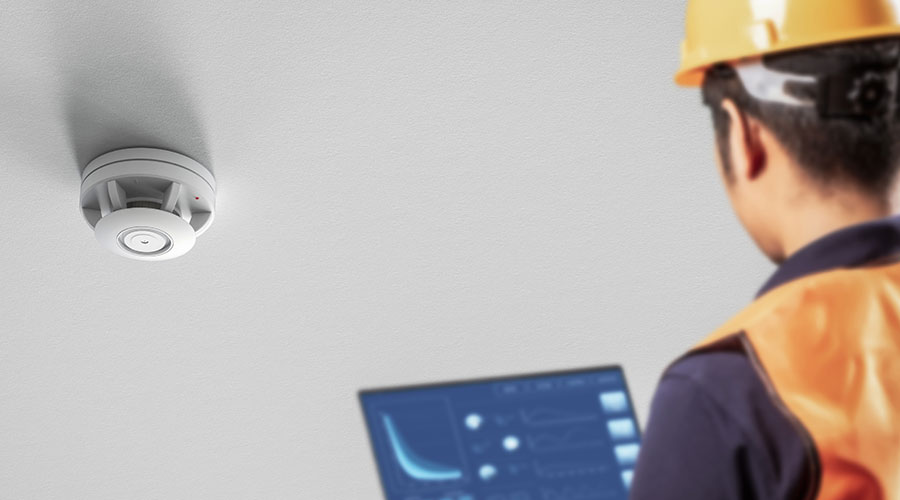Testing New Fire Alarm Systems Can Reveal Serious Problems
The following are real-life examples of when thorough testing of new fire alarm systems was crucial to a building and its occupants because the test revealed serious problems.
Case I (Contractor): A contractor installing an addressable fire alarm system for a university residence hall project notified the design engineering firm that the system was ready to have the engineer come out and test the system; they even signed and submitted the NFPA 72 Inspection and Testing Form for review. The first tamper switch tested was incorrectly wired. The fire alarm control panel did not show or sound a “trouble” alarm when this valve was closed, but when opened it sounded the “trouble” alarm. A review of the junction box showed that the wires had been reversed. As the testing progressed, more installation mistakes were discovered and the testing was subsequently halted. The contractor was instructed to go back and test every device and reschedule the engineer’s test. About a week later the system was re-tested and, aside from a few minor non-functional items, everything performed as designed. Without the thorough examination, the fire alarm system would have been in place, but completely unfit to work properly.
Case II (Local AHJ). An addressable fire alarm system was designed for a 107,000-gross-square-foot, four-story building that was being renovated into a college classroom building. Before the engineering firm could have the system tested by the installing contractor, the city fire department performed its fire alarm test of the system and gave its approval by issuing the occupancy permit. The installing contractor did not want to repeat the test for the engineer. After convincing the contractor to test the system, it was discovered that none of the smoke damper power circuits had been connected to the fire alarm system; thus, all dampers were energized and in the open position regardless of that damper’s duct-detector status. When test smoke was injected into the HVAC ducts to test the operation of duct detectors, thick smoke was dispersed throughout the floor that was being tested. So here was a system where the local AHJ didn’t review the plans and didn’t know about the dampers, so none of the dampers were tested. Yet the contractor was ready to turn the system over to the owner. Imagine what could have happened if a catastrophic fire had occurred and all the dampers were in the open position permitting the smoke to pass through the HVAC system.
Case III (Engineer). For a new 105,000-gross-square-foot, three-story college classroom/laboratory building, an addressable fire alarm system was designed. The engineering firm had painstakingly coordinated the locations of the smoke detectors with the lights and HVAC diffusers in the corridors, being sure to maintain proper spacing from device to device and from the ends of the corridors. However, while performing the final testing with the contractor, engineers discovered several vaulted ceilings in the main building lobby that were separated by bulkheads that dropped down, creating “beam pockets.” These “beam pockets” would contribute greatly in slowing down the ceiling jet as it traveled across the ceiling to a point where a delayed detection would occur from any detectors in adjacent areas. Detectors had to be added to these “beam pocket” areas in order to be code-compliant. Had the engineers not gone through the testing procedures, the architectural changes to the ceiling plans would have gone unnoticed, and the fire alarm system would not have been in compliance.
The point of the three cases presented is that we can all make mistakes. In Case I, the contractor certified the system to function correctly even though system devices were wired incorrectly. In Case II, the AHJ wasn’t aware of the smoke dampers that should have been connected to the fire alarm system and signed off on the system. In Case III, the engineer completed the design only to discover in the field that additional devices had to be added to achieve complete detection coverage in the lobby. Again, we’re not infallible.
Related Topics:













